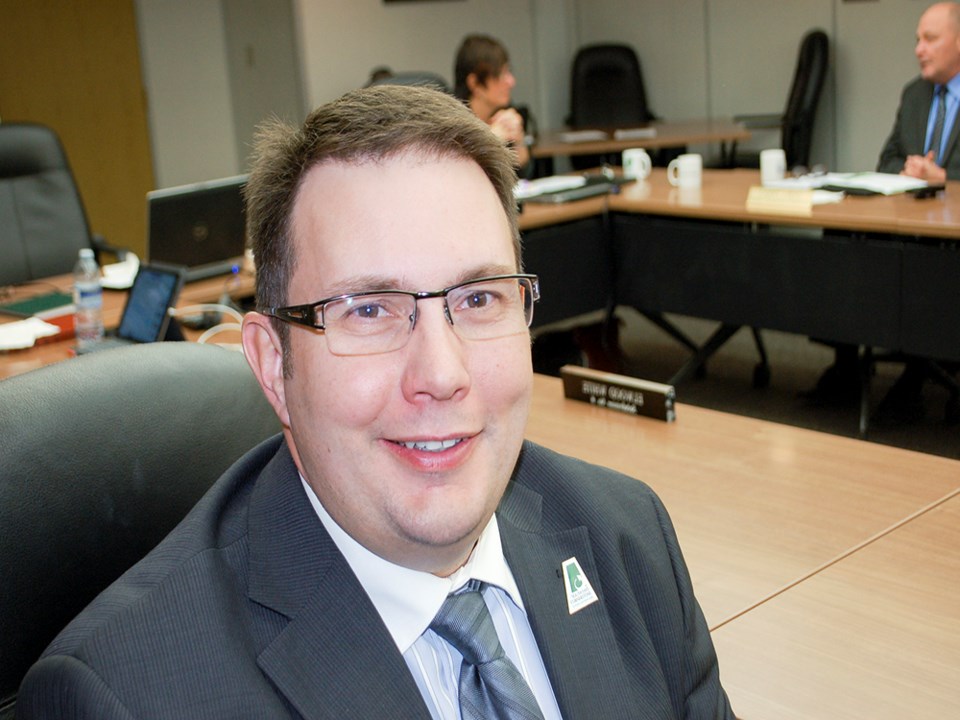The human resources and payroll department of the South East Cornerstone Public School Division introduced some efficiencies within the past year that are now paying off, said Gordon Husband, superintendent of Human Resources Services for Cornerstone who spoke to the members of the board on Nov. 19 during their regular monthly open business session.
Through the elimination of a couple of part-time positions and a job-sharing program, the human resources section was able to introduce those efficiencies, he said.
More technology, less paper has been the end result for the move in the public school division that includes 8,408 students from pre-kindergarten to Grade 12. Those students are taught by a total of 552 teachers which includes 440 classroom educators.
The division employs 132 education assistants, 26 library resource people, 126 people in transportation and 59 administrative assistants, as well as 103 maintenance personnel. Some of the support workers are members of unions with contracts that will be expiring in August of next year, said Husband.
“Recruitment is always a challenge, especially for some subjects and for the smaller schools,” he said. “We have 39 schools to staff with teachers and support teams. Mid-year recruitment for such things as people on maternity leave, also poses a challenge as do specialized positions,” Husband explained.
A five-year plan with the University of Regina has provided Cornerstone with a steady stream of teacher internships for specific periods of time and “we have gotten into a habit of hiring many of these interns, and while they are with us, they get valuable classroom experiences that many university students don’t.”
“It also seems pretty good for their mentors,” said Estevan trustee Janet Foord.
“Yes, it’s definitely good for some veteran teachers in terms of co-operation and rejuvenation,” added Husband.
Lynn Little, the director of education for the division said, recent discussions and collaboration with the dean of social work at the university, proved to be interesting and beneficial. “We have professionals there who we can hire who have a different skill set.”
In response to inquiries from Estevan trustee Pam Currie, regarding union-based grievances, Husband said most of those get resolved at the first or second stage of the process. He informed Currie there is no “shop steward” type of system to follow within the public school’s grievance program.
“We have been able to resolve them before they have to come to you folks,” he told the board members. “That means we have to keep working on relationships and keeping the information out there.”
“How many grievances would you handle in a typical month?” asked chairwoman Audrey Trombley.
“We would have between eight and 12 a month where maybe a concern or something negative is brought to us. We try to deal with it at that first step, before there is even a paper trail. Most of them are in the form of questions where a little knowledge can be offered and is helpful along with a discussion. As far as grievances with paper work involved, I would say we, maybe, have three a year,” said Husband who added the first two steps would see his counsellors or staff members stepping up to work on a resolution with the grieving party and the third step involves him and if the grievance was still actionable by that stage, the fourth step would be with the board. He said so far in the history of the public division, they have never had to move beyond a second step with any issue involving a member of the Saskatchewan Teachers’ Federation or others.
“We work with the union’s local president and the staff member, when it comes to grievances coming from their members,” Husband added.
The board members said they were also pleased to see the formation of the Saskatchewan Professional Teachers Regulatory Board (SPTRB) as an independent body established to verify certification of Saskatchewan’s teachers and any disciplinary action required among them. There were a couple of questions regarding the certification process and the yearly fees to be paid by teachers to be members and whether or not that included substitute teachers. Husband said he wasn’t certain about the status of substitute-teachers and the membership fee structure imposed by the SPTRB.
Foord then noted that she was surprised to learn that the two members of the new regulatory board that were to be selected from the general public, turned out to be two recently retired teachers. “That raised some concerns in my mind,” she said.
Checks are also being made with other school divisions around the province to see how they conduct their yearly staffing assignments such as dealing with circumstances like employee absences and return-to-work
processes following extended sick leaves, said Husband.
He said under the new system, those on medical leaves can now be monitored efficiently and employee wellness research, including addictions or other issues, can trigger support services more quickly and effectively. He also reported that seniority lists can be tracked more effectively, thanks to new software development, within the system.




